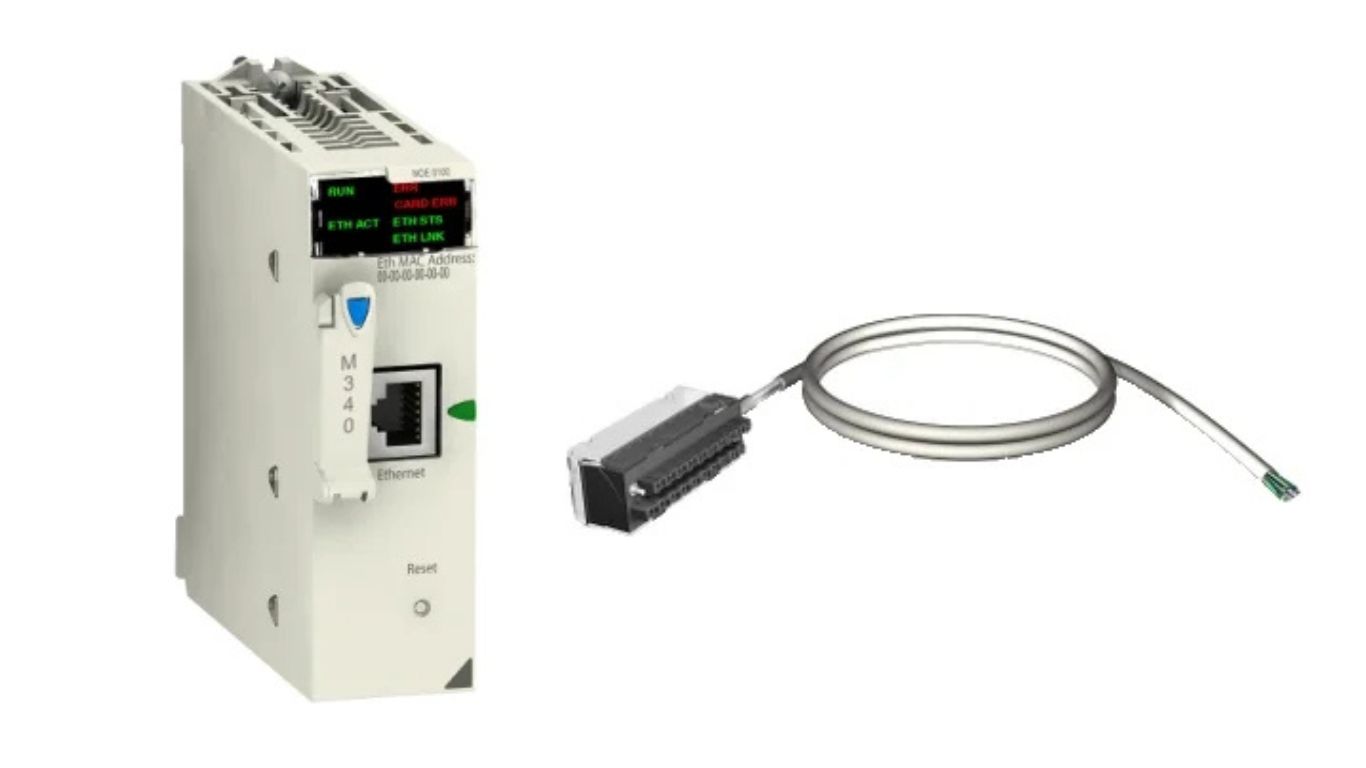
Programmable Logic Controllers (PLCs) are the backbone of industrial automation, providing control and monitoring of manufacturing processes. They offer a flexible, reliable, and cost-effective solution for managing complex operations. In this article, we will explore the fundamentals of PLCs, their core components, how they work, and their applications in modern industrial settings. Additionally, we'll dive into the role of some advanced modules, such as BMXDDM3202K, BMXXBP0800, BMXNORO200H, and BMXDDO3202K, which enhance the functionality and performance of PLC systems.
What is a PLC?
A PLC is a ruggedized computer designed to control machinery and processes in manufacturing plants, utilities, and other industrial environments. It is programmed to monitor inputs (such as sensors), execute specific operations based on the program, and control outputs (like actuators) accordingly. Unlike general-purpose computers, PLCs are built to withstand harsh conditions, including extreme temperatures, vibration, and electrical noise.
Core Components of a PLC
Central Processing Unit (CPU)
The CPU is the brain of the PLC. It processes the control program and communicates with input and output devices. The CPU interprets signals from sensors, processes the logic based on the program, and then sends commands to control devices.
Input and Output Modules
PLCs receive input signals from sensors and other devices and send output signals to actuators, motors, and other machinery. Input modules convert signals from field devices into data the PLC can process, while output modules execute commands to control machines and equipment.
Power Supply
The power supply provides the necessary electrical energy to operate the PLC system. It ensures that the system remains functional even in fluctuating power conditions.
Programming Device
A programming device, often a computer or handheld programmer, is used to write and load the control program into the PLC. It allows operators to monitor the system and make changes to the program as needed.
How Do PLCs Work?
PLCs operate in a cycle known as the scan cycle, which consists of three main steps:
Input Scan
The PLC reads the status of all connected input devices (e.g., sensors, switches).
Program Execution
The PLC processes the input data based on the user-defined program (ladder logic, structured text, or function block diagram). The PLC executes the logic and determines the required actions.
Output Scan
After processing the inputs, the PLC sends control signals to output devices (e.g., actuators, motors) based on the logic result.
The scan cycle repeats continuously, allowing the PLC to control systems in real-time.
Advanced Modules and Their Role in PLCs
PLCs are equipped with a variety of modules to enhance their performance, connectivity, and functionality. These advanced modules ensure PLCs can handle complex tasks and adapt to the needs of modern automation systems.
BMXDDM3202K – Diagnostic and Monitoring Module
The BMXDDM3202K module is a diagnostic tool designed to monitor and improve the performance of PLC systems. It provides real-time diagnostics, fault detection, and system health monitoring, which helps in identifying potential issues before they affect operations. With this module, operators can schedule maintenance tasks proactively, reducing unplanned downtime and improving system reliability.
BMXXBP0800 – Expansion Bus Module
The BMXXBP0800 is an expansion bus module that allows for seamless integration of additional modules into a PLC system. It expands the PLC's capability by increasing the number of input and output modules that can be connected, making it highly scalable. This module is crucial for industries that require flexibility and adaptability in their automation systems, as it provides easy expansion without compromising performance.
BMXNORO200H – Communication Module
The BMXNORO200H is a communication module that facilitates smooth data exchange between the PLC and other automation systems. It ensures high-speed, reliable communication, which is critical for real-time applications. With this module, PLCs can easily integrate with SCADA systems, HMIs, and other devices, enabling a more connected and efficient automation environment. It is ideal for applications requiring robust communication protocols and seamless data exchange.
BMXDDO3202K – Digital Output Module
The BMXDDO3202K is a digital output module designed to control actuators and other field devices. It provides high-speed output control, ensuring precise and reliable operation of connected machinery. This module is perfect for industries where fast response times and accurate control are essential, such as in robotics, conveyor systems, and process control applications.
Applications of PLCs in Modern Industry
PLCs are widely used across various industries for tasks such as:
- Manufacturing Automation: PLCs control assembly lines, robotics, and conveyor systems, improving production efficiency and reducing human error.
- Process Control: In industries like oil and gas, food processing, and chemicals, PLCs manage complex processes like temperature, pressure, and flow control.
- Energy Management: PLCs are integral in managing energy distribution and usage in power plants, substations, and industrial facilities.
- Building Automation: PLCs control heating, ventilation, and air conditioning (HVAC) systems, lighting, and security systems in commercial and residential buildings.
Advantages of Using PLCs
- Reliability: PLCs are designed for continuous operation in harsh industrial environments.
- Flexibility: PLCs can be reprogrammed to accommodate changing requirements, making them adaptable to various applications.
- Ease of Use: With user-friendly programming languages and interfaces, PLCs are easy to configure and maintain.
- Cost-Effective: PLCs reduce the need for hardwired control systems, simplifying wiring and reducing installation costs.
Conclusion
PLCs have become indispensable in modern industrial automation. From simple tasks to complex control systems, they offer the flexibility, reliability, and scalability required in today’s fast-paced industrial environments. Advanced modules like BMXDDM3202K, BMXXBP0800, BMXNORO200H, and BMXDDO3202K play a crucial role in enhancing the functionality of PLCs, providing diagnostic, communication, expansion, and output control capabilities that meet the demands of diverse applications.
As industries continue to advance, PLC technology will evolve, incorporating new innovations to further improve automation systems' performance, efficiency, and connectivity. With their core benefits and expanding capabilities, PLCs will remain the foundation of industrial control systems for years to come.











